
| Manufacturer: | Osram |
| Model: | Dulux S G23 9W/60 Red |
| Application: | General Lighting - decorative |
| Wattage: | 9W |
| Width (max): | 32mm |
| Length: | 165mm |
| Tube Length: | 240mm |
| Bulb/Tube material: | Glass, colour 60 phosphor on inner surface |
| Colour Temperature: | Unknown |
| Peak output wavelength: | N/A |
| Total light output: | 400Lm (Manufacturer's claim - 44.4Lm/W) |
| Rated lifetime: | Unknown Hours |
| Cap: | G23 |
| Operating voltage: | 60V AC Only |
| Operating current: | 170mA |
| Warmup/restrike time: | 1 minute/none |
| Cost (original): | Unknown |
| Value (now): | Unknown |
| Place of manufacture: | Italy |
| Date of manufacture: | Unknown |
| Lamp Status: | Working |
| Related Pages: | Osram Dulux S 9W Green |
Compact fluorescent lamps in non-standard colours are not quite as unusual as they used to be, starting to obtain a bit of a foothold for either decorative lighting, or for use at occasions such as children's parties. They generally however are adaptations of existing designs of integral compact fluorescent lamps - aimed squarely at the domestic market. This lamp however is a very clear indication that Osram at least think that there's a market for them in the professional sector. This lamp is designed for use with an external (usually permanently fixed) ballast. While this drives the initial system cost up slightly, in the long term it reduces maintenance costs however, as the lamps are cheaper to replace, and the ballast should last the life of the installation. The two pin cap on this lamp includes an internal glow bottle starter and RF suppression capacitor, which of course limits this lamp to use on conventional magnetic control gear - a four pin version exists, which is the same lamp sans starter, specifically for use on electronic control gear.
As usual for Osram, the overall manufacturing quality is very good, and the lamp performs well. The fact that this lamp had never been used before was evidenced by some quite impressive flickering and swirling effects in the tube for the first ten minutes or so of use, this died down quickly though, and has not returned despite a number of starts both warm and cold since then.
While the text on the packet and the lamp state the colour as "red" if you were to ask anyone on the street what colour it is, they'd actually answer very decidedly "pink." These lamps get their distinctive colours from the phosphors used in them rather than through a coloured coating or glass. While easier to produce than physically coloured lamps, this does have the downside of limiting how saturated the colour can be, as phosphors to produce a deep saturated colour from the mercury vapour discharge do not exist (with the exception of blue). As a result of this, both the red and green are more pastel than pure.
While the colour may disappoint if you were hoping for a bright traffic signal red lamp, it can actually be used to great effect from a decorative point of view if mixed with other light sources. Wall mounted up-lighters and similar situations spring to mind most readily.
I would be curious to know if a yellow version of this lamp (or any other colour for that matter) exist or have ever existed to compliment the three colours I have here.

Osram Dulux S G23 9W/60 Red Compact Fluorescent Lamp - General overview of lamp
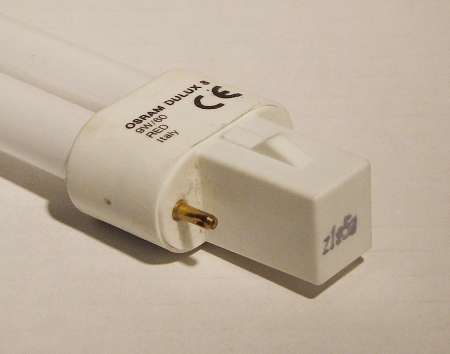
Osram Dulux S G23 9W/60 Red Compact Fluorescent Lamp - Detail of lamp cap
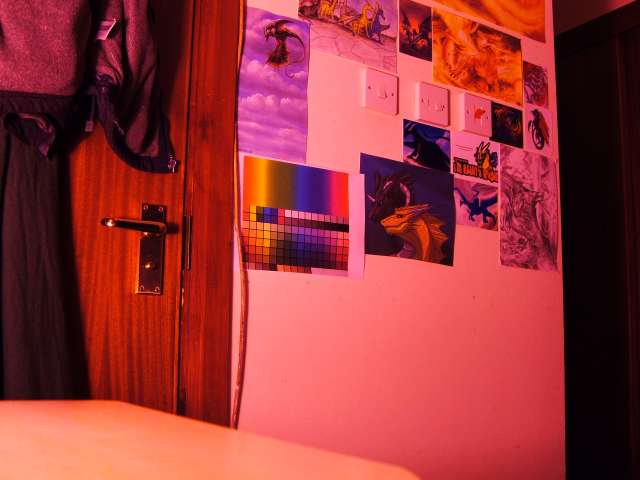
Osram Dulux S G23 9W/60 Red Compact Fluorescent Lamp illuminating a wall in my room from a distance of roughly two metres
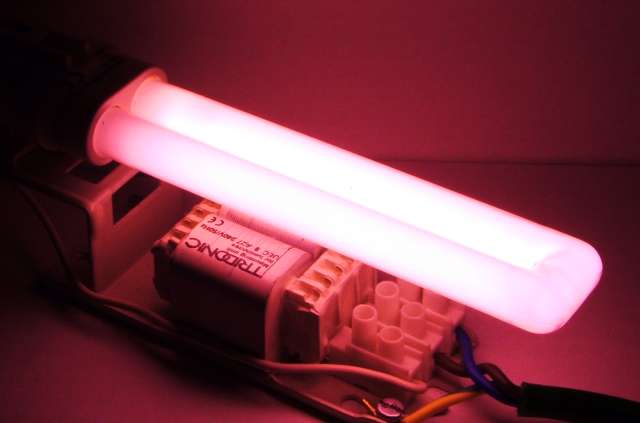
Osram Dulux S G23 9W/60 Red Compact Fluorescent Lamp - Overview of the lamp while lit
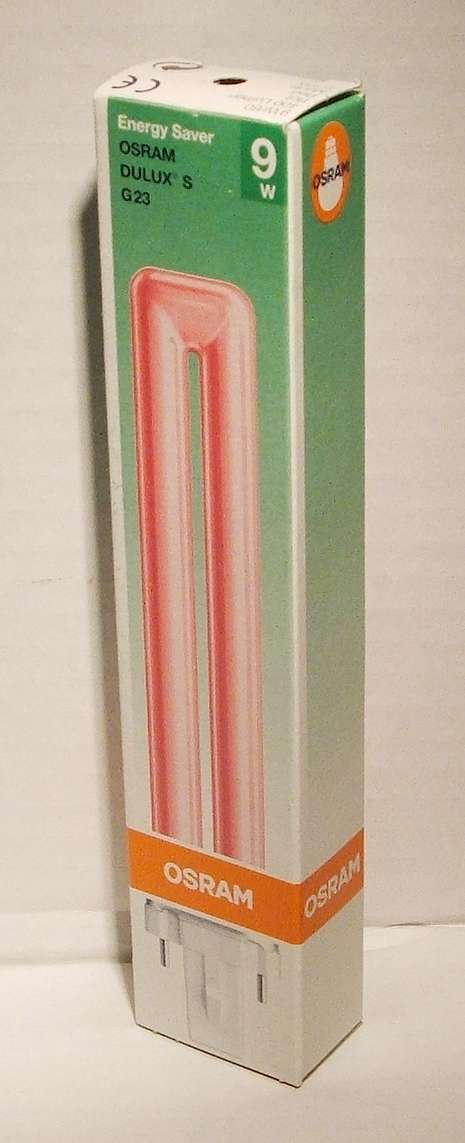
Osram Dulux S G23 9W/60 Red Compact Fluorescent Lamp - Overview of lamp packaging
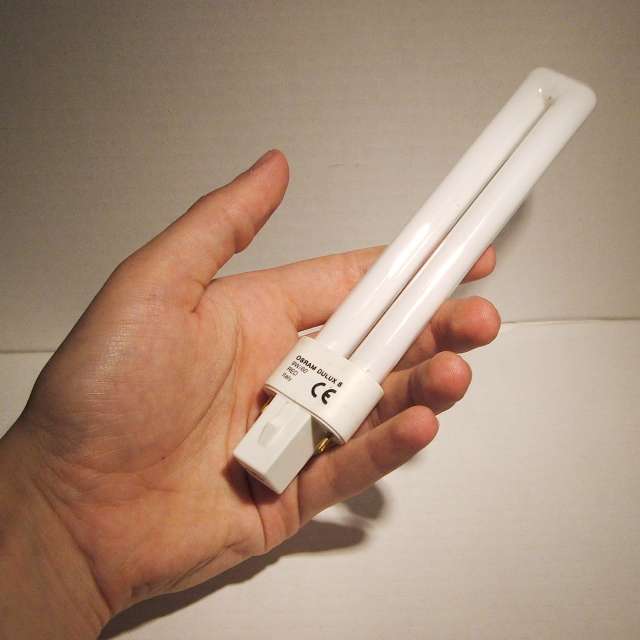
Osram Dulux S G23 9W/60 Red Compact Fluorescent Lamp - Shown held in hand for scale

Osram Dulux S G23 9W/60 Red Compact Fluorescent Lamp - Shown adjacent to ruler to show length of lamp

Osram Dulux S G23 9W/60 Red Compact Fluorescent Lamp - Lamp output spectra
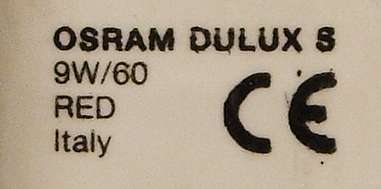
Osram Dulux S G23 9W/60 Red Compact Fluorescent Lamp - Detail of text printed on lamp base
This lamp added to the Virtual Display Shelf on the 4th April 2007 at 21:46.
References: Lamp packaging and markings only.
Acknowledgements: Many thanks to the reader of this website who donated this lamp for display!
This page was last updated on 15th June 2023: Changes made to page formatting to improve readability on mobile devices and some background page code changes to improve search engine behaviour.